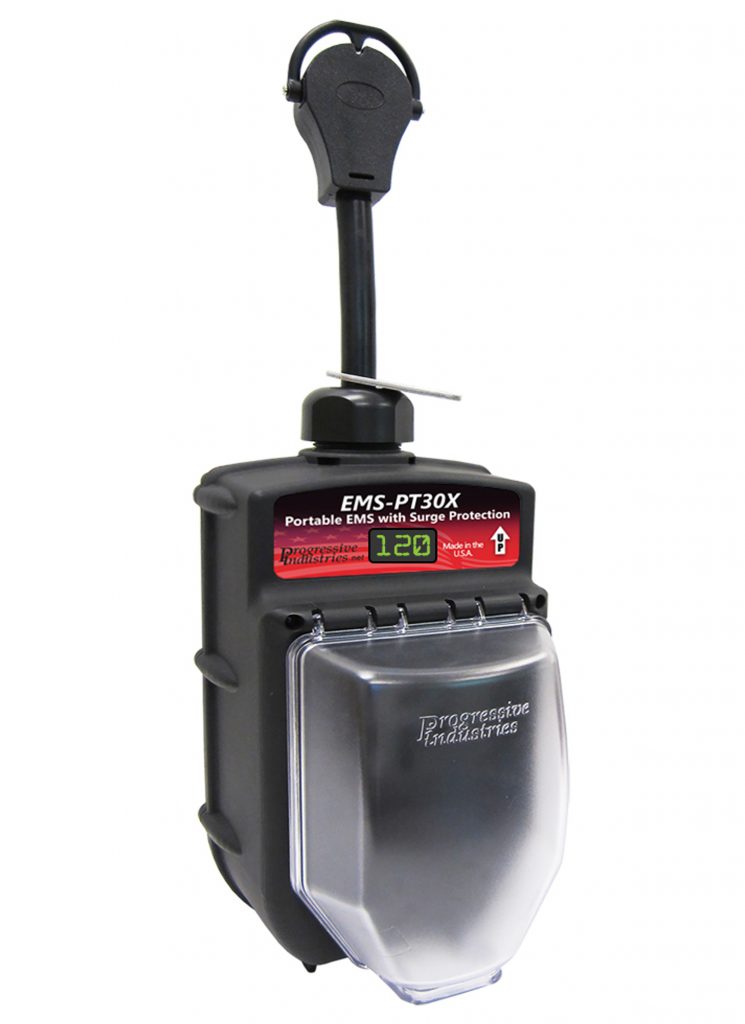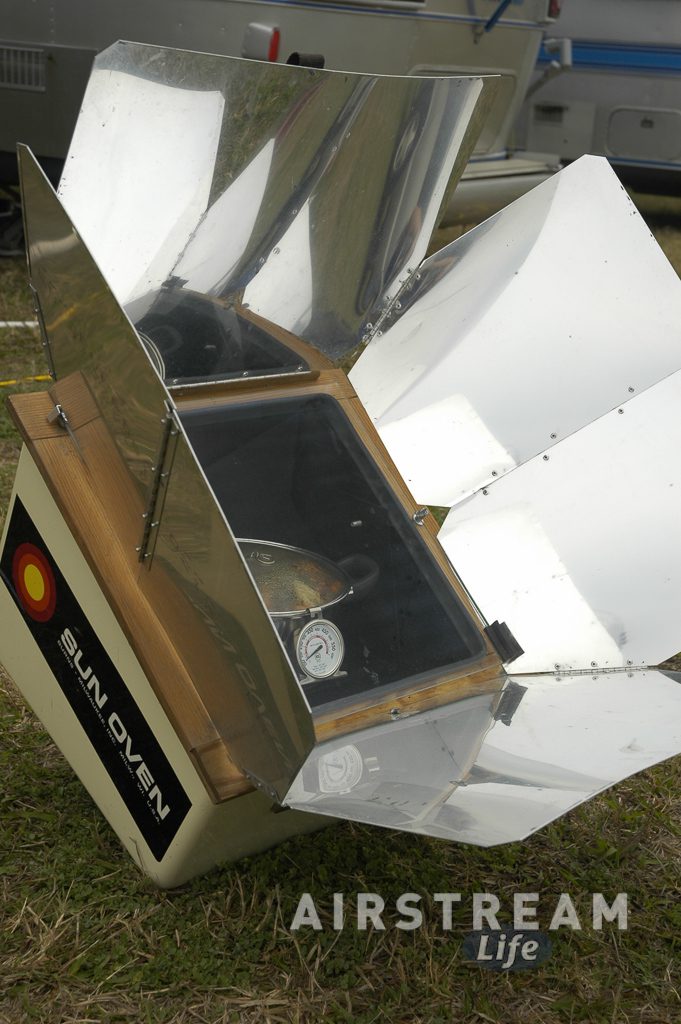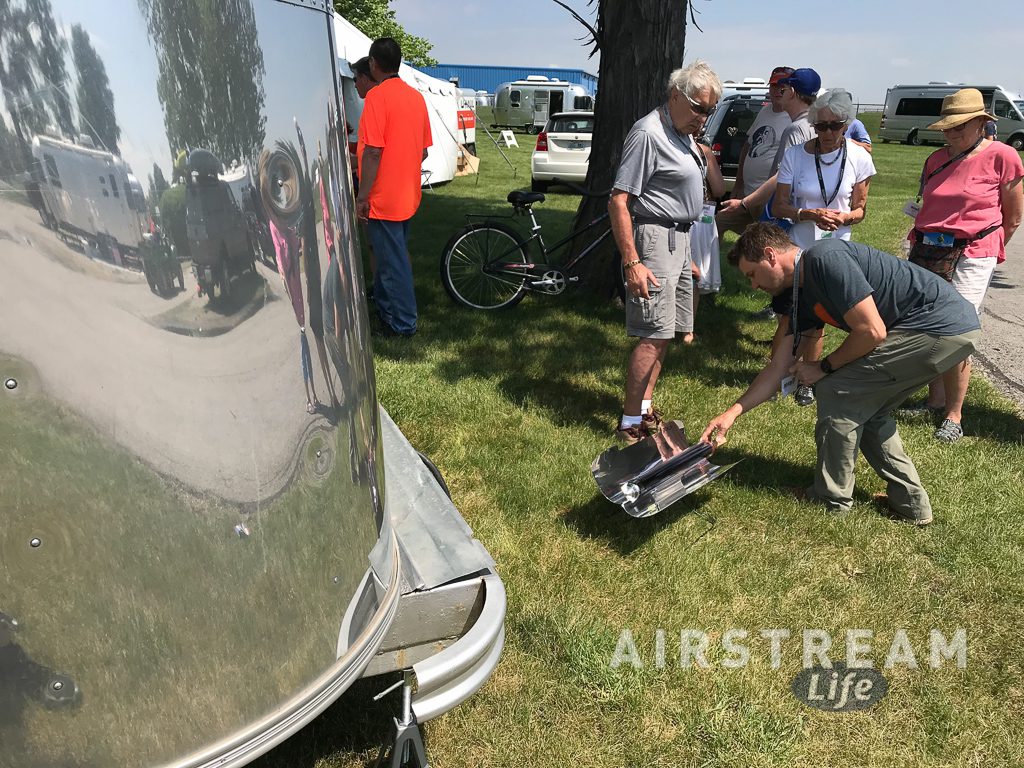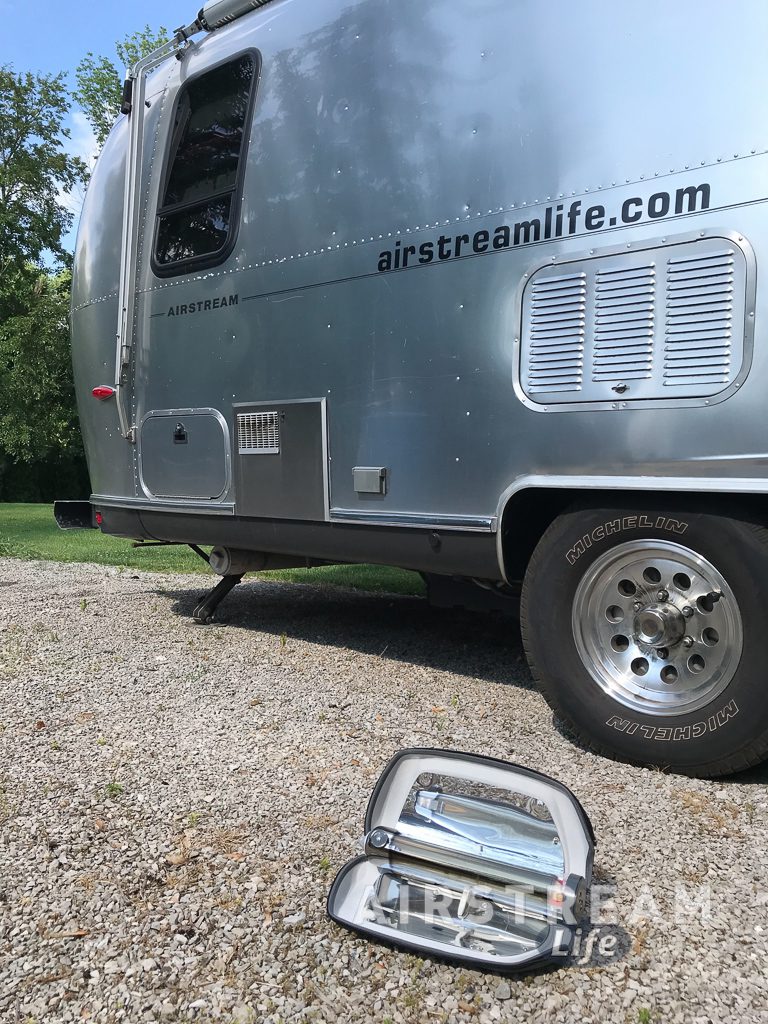If you take one message away from this posting, it should be this: Don’t trust campground power.
I’ve camped at literally hundreds of campground across North America, and I’ve frequently been amazed how often the electrical service is poor or even dangerous. The most frequent problem is low voltage, where the normal 120 volt or 240 volt service sags because everyone is using their air conditioner at the same time.
The electrical devices in your Airstream are designed for normal voltage plus or minus 10 percent. That means anywhere from 108 volts to 132 volts is tolerated by the refrigerator, air conditioner, microwave, and power converter. (The power converter changes the 120 volt AC power into 12 volt DC power to charge the battery and support all the other 12 volt accessories like furnace, water pump and lights, so it’s particularly important that it is happy.)
But in reality, a hot day in a campground can mean brief “brown outs” where the power dips below 105 volts—and that is bad news indeed. If your air conditioner tries to start up under those conditions it will probably burn out, and that’s a $1000+ replacement. (Plus you’ll have to suffer in the heat until you can get a repair!)
We have a Digital Voltage Meter in the Airstream Life Store, and I recommend that everyone carry one at a minimum so you can test the power before you plug in your Airstream. It checks the voltage and the wiring to make sure you aren’t plugging into bad power. It’s cheap insurance and will protect you from things like mis-wired outlets, bad grounds, and incorrect polarity.
 But the limitation of a meter is that it can’t help you if there’s a power surge or dip when you’re not watching. The best solution is a smart Electrical Management System (EMS). Like the Voltage Meter, the EMS checks the wiring before allowing power to flow to your Airstream. Then it continuously monitors for dangerous conditions like high or low voltage.
But the limitation of a meter is that it can’t help you if there’s a power surge or dip when you’re not watching. The best solution is a smart Electrical Management System (EMS). Like the Voltage Meter, the EMS checks the wiring before allowing power to flow to your Airstream. Then it continuously monitors for dangerous conditions like high or low voltage.
An EMS like that will shut off the power instantly (in milliseconds) if something bad is happening, and then turn the power back on when conditions are safe again. It’s a brilliant solution.
Take a few tips next time you go camping: When you get to your campsite, inspect the power pedestal before you plug in. Look for cracked or broken outlets, wasp nests (I’ve been stung more than once when opening a pedestal cover), or looseness. If the outlet seems questionable, don’t plug in without first using a Digital Voltage Meter or EMS. You should see about 120 volts, and there should be no indications of mis-wiring.
If the voltage is below 115, be wary. That means the wiring you share with many other campers is already a little stressed, and it’s likely to go lower once you plug in. If you need to use an extension cord, that’s another concern because longer cord runs mean lower voltage. And don’t ever try to run the air conditioner while the Airstream is connected to a 15-amp household plug. It might work for a while but sooner or later the voltage will drop or one of the plugs may melt.
If the campground power voltage is a little low to start and you know the weather is going to get hot later you can probably expect that the voltage will continue to drop, perhaps to dangerous levels. This is the ideal situation to be using a good EMS, because it takes only a few seconds of low power to cause expensive problems in the Airstream. It’s much better to have the power cut off automatically by the EMS (and later restored automatically) than to blow up your AC appliances. The same is true of voltage spikes.
There are a couple of brands of EMS units on the market today. Most outlets sell a Surge Guard unit but I’m not a big fan of that one. Reliability seems to be an issue and the overall quality is (in my opinion) lower. For a decade now I’ve been using Progressive EMS units and they’ve been great, so that’s the only brand we carry in the Airstream Life Store.
Progressive also stands behind their product. I had one fail because I left it out in a Florida rainstorm with the plugs facing up, and they filled with water. Progressive honored the lifetime warranty anyway and replaced it for free. The current models come with a nice rain shield now, so even that problem is unlikely to occur.
Whatever solution you choose (Digital Volt Meter, Electrical Management System), be sure to pay attention to the power everywhere you plug in, including when you’re “driveway camping” at home or a friend’s house. A few seconds of attention can save you an expensive repair later!
 I like trying new things as we travel in our Airstream. Last week, at Alumapalooza, I saw an earnest Welsh man named Davey Jones (really) demonstrating something I’ve never seen before: a solar cooker that actually makes sense.
I like trying new things as we travel in our Airstream. Last week, at Alumapalooza, I saw an earnest Welsh man named Davey Jones (really) demonstrating something I’ve never seen before: a solar cooker that actually makes sense. Davey was showing off the new GoSun line of solar cookers at Alumapalooza. (They’re called “cookers” because they can be stove, oven, broiler, steamer, or water-heater depending on how you use them.) Even in hazy Ohio sunlight he was baking up cinnamon rolls and frying bacon all day long. I’m not sure if I was more impressed at the cooking or the cleverness of his olfactory marketing.
Davey was showing off the new GoSun line of solar cookers at Alumapalooza. (They’re called “cookers” because they can be stove, oven, broiler, steamer, or water-heater depending on how you use them.) Even in hazy Ohio sunlight he was baking up cinnamon rolls and frying bacon all day long. I’m not sure if I was more impressed at the cooking or the cleverness of his olfactory marketing.
 We got the “Go” model to try it out before adding it to
We got the “Go” model to try it out before adding it to  It’s simple to use: just plug it into any available outlet in your Airstream while you’re connected an electrical hookup, and observe the lights on the display. You’ll always know at a glance that you’re getting good power.
It’s simple to use: just plug it into any available outlet in your Airstream while you’re connected an electrical hookup, and observe the lights on the display. You’ll always know at a glance that you’re getting good power.


